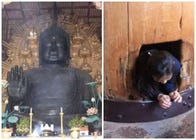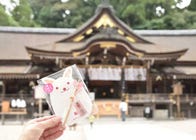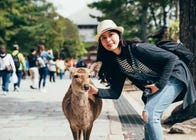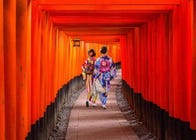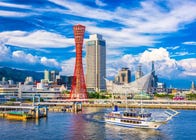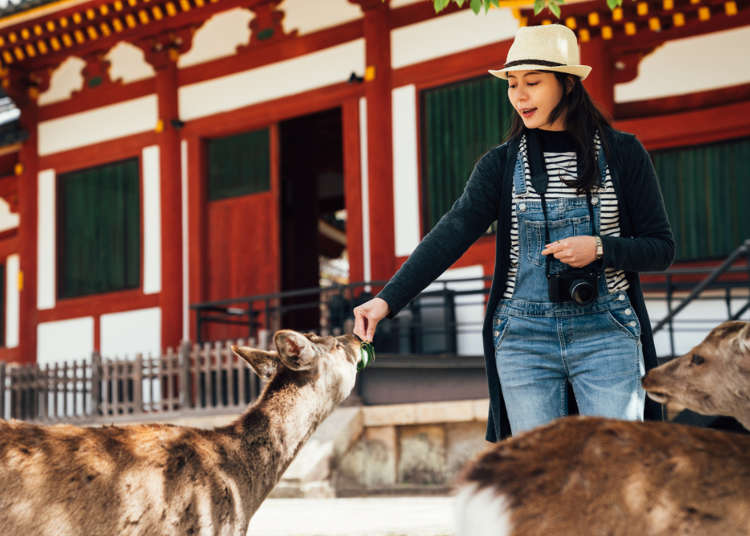
5 Must-Visit Nara Temples and Shrines: Discover the Timeless Beauty of Japan's Ancient Capital
- Written by: WESTPLAN
In the heart of Japan's ancient city, Nara, a rich tapestry of history unfolds, spanning over 1300 years since it served as Japan's capital. Within this historical treasure trove lie 8 registered historic monuments of ancient Nara and UNESCO World Heritage sites.
Among these revered sites, Nara boasts 6 magnificent temples: Todai-ji, Kofuku-ji, Kasuga-Taisha, Gango-ji, Yakushi-ji, and Toshodai-ji. Adding to the allure are the special historical remnants of Heiji Castle and the pristine wonder of Kasugayama Primeval Forest. Here we explore the essence of Nara's cultural legacy.
- Table of Contents
-
- 1. Kasuga Grand Shrine: Established to Protect Heiji-kyo
- 2. Todai-ji Temple: Giant Buddha and Buildings are Both Among the Largest in the World
- 3. Omiwa Shrine: Japan’s oldest Shinto shrine
- 4. Hasedera: The sacred field of Kannon with beautiful peonies
- 5. Abe Monju-in: An ancient tomb known as one of Japan’s three major Buddhist Monju temples
1. Kasuga Grand Shrine: Established to Protect Heiji-kyo
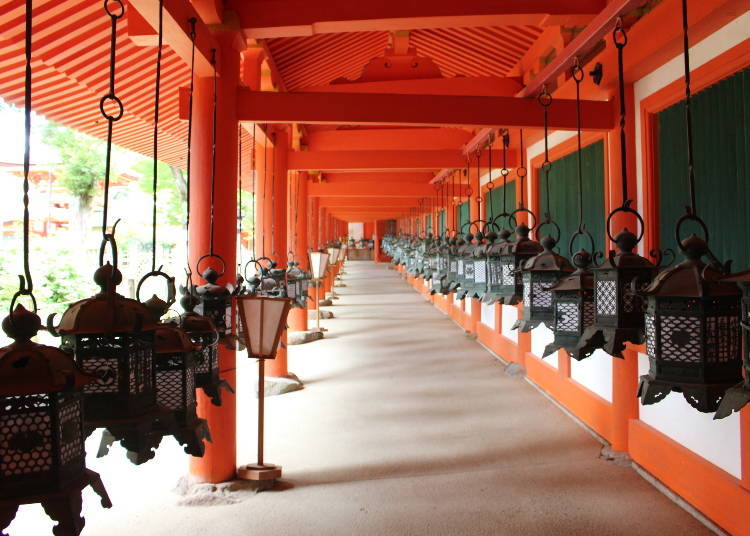
Kasuga-Taisha, also known as Kasuga Grand Shrine, was established in the year 768 to protect the Heiji-kyo national capital and bless its citizens with peace. The shrine houses four deities - Takemikazuchi-no-Mikoto, Futsunushi-no-Mikoto, Amanokoyane-no-Mikoto, and Himegami - to whom visitors can offer prayers.
One highly recommended activity is attending the chohai morning worship ritual, which was opened to the public to celebrate the 1300-year memorial of the capital's transfer to Nara. The morning ritual is a sight to behold, with unmatched purity and beauty.

There are several smaller shrines affiliated with the Kasuga Grand Shrine. One of them, the Meoto Daikoku-sha, is unique to Japan as it is the only shrine that enshrines a pair of married deities. It is believed to bring benefits to business prosperity and harmony for married couples.
These deities, also known as the gods of matchmaking, attract a constant stream of visitors who come to purchase heart-shaped ema and pray for good luck in finding a partner.
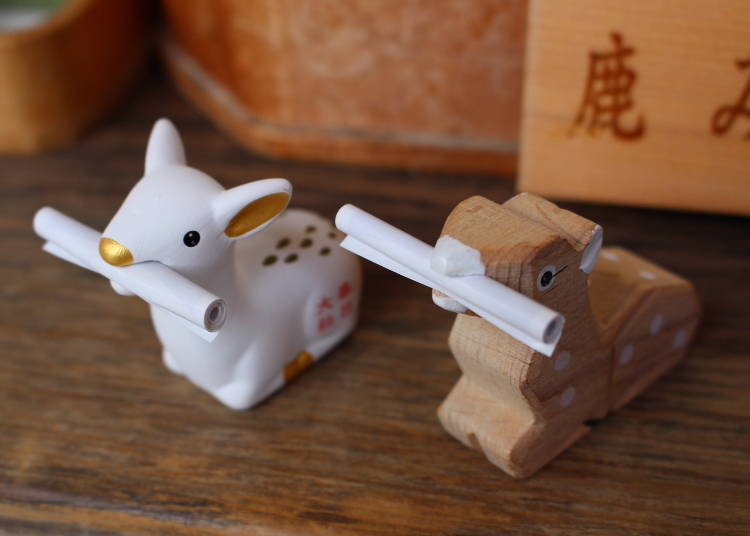
According to tradition, the temple deity Takemizuchi-no-Mikoto arrived at Kasuga Grand Shrine riding on a white deer all the way from Kashima, Ibaraki. As a result, deer are revered and considered as divine beings at the shrine. You can find many lucky items like omamori charms and omikuji fortunes that feature depictions of deer. The deer omikuji, in particular, are quite popular as they carry fortunes in their mouths.
-

-
Address
160, Kasuganocho, Nara-shi, Nara, 630-8212
View Map -
Nearest Station
Nara Station (JR Kansai Main Line / JR Yamatoji Line / JR Sakurai Line)
11 minutes by car
- Phone Number 0742-22-7788
-
Address
160, Kasuganocho, Nara-shi, Nara, 630-8212
2. Todai-ji Temple: Giant Buddha and Buildings are Both Among the Largest in the World
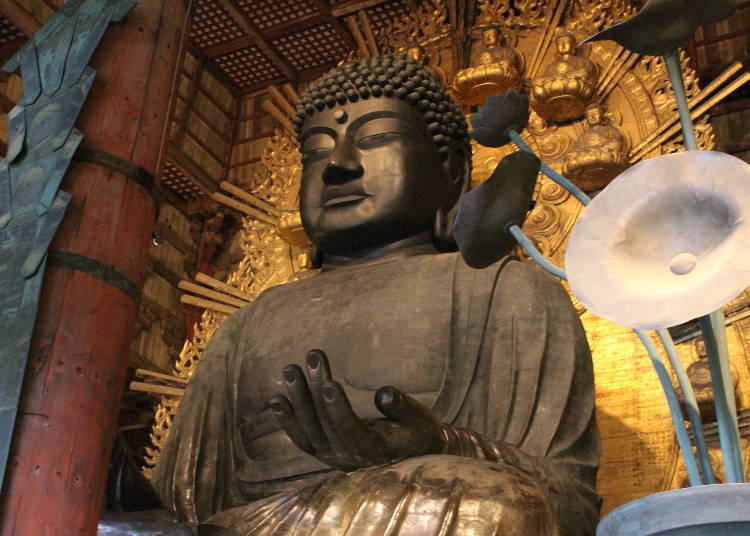
One place you absolutely cannot miss when visiting Nara is the Todai-ji Temple. The Daibutsu-sama, or "Great Buddha" statue, is so famous that it's considered essential to see when visiting Nara.
In the Nara period, Emperor Shomu commissioned the construction of the Daibutsu-sama, also known as Rushanabutsu, as a prayer for the happiness of all people, in accordance with Buddhist teachings.
The name of the Nara temple, "Todai-ji", means "large temple of the east" in Japanese, which was the name of the then-capital Heian-kyo's temple. The spacious premises of the temple feature several of the world's largest buildings and structures, such as the Great South Gate and the Daibutsuden, or "Great Buddha Hall".
The Daibutsu-sama statue is truly massive, standing 15 meters high and with a face that's 5 meters tall.
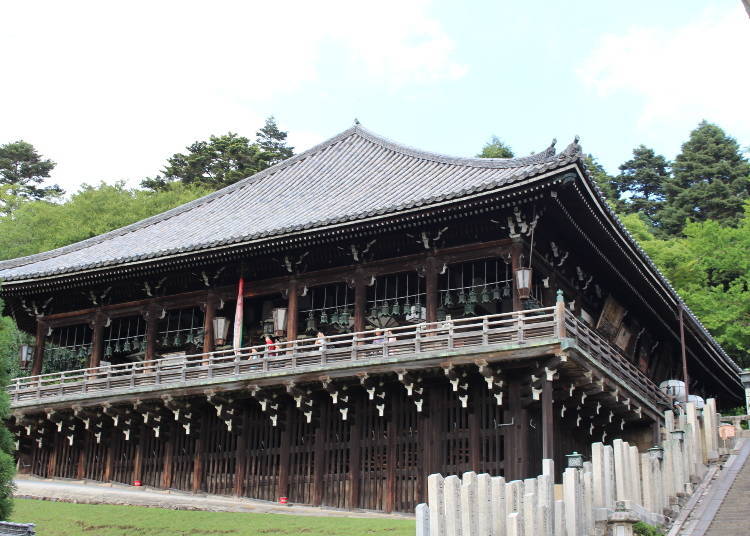
After making the acquaintance of Nara's symbolic giant Buddha, tour the rest of the halls and temples located around the Todai-ji Temple complex.
A few of the halls you will want to be sure to visit are the Kaidan-do Hall, which houses the clay Shitennoji statues considered representative pieces of the Nara period, the Nigatsu-do Hall and stage construction, standing at the base of the mountain to the East and famous for its water-drawing ceremony held in March, and Hokke-do Hall (Sangatsu-do Hall), the temple's oldest remaining building constructed in the Nara period.
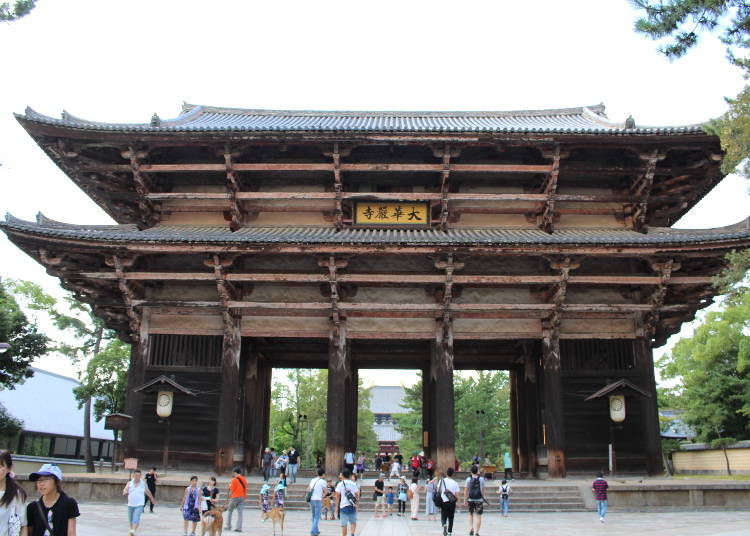
The Great South Gate, approximately 25.5 meters tall, is Todai-ji's main gate. Its size will surprise you, as will learning that the pair of Kongo Rikishi statues were completed in a mere 69 days, by Kaikei and several assistants under Buddhist sculptor Unkei's direction.
The "Todaiji Museum" is another must-see spot, with its collections of temple treasures dating from the Nara period, including a statue of the young Buddha and the Nikko and Gekko Bosatsu statues.
-

-
Address
406-1 Zoshicho, Nara City, Nara Prefecture, 630-8587
View Map -
Nearest Station
Kintetsunara Station (Kintetsu-nara Line)
20 minutes on foot
- Phone Number 0742-22-5511
-
Address
406-1 Zoshicho, Nara City, Nara Prefecture, 630-8587
3. Omiwa Shrine: Japan’s oldest Shinto shrine
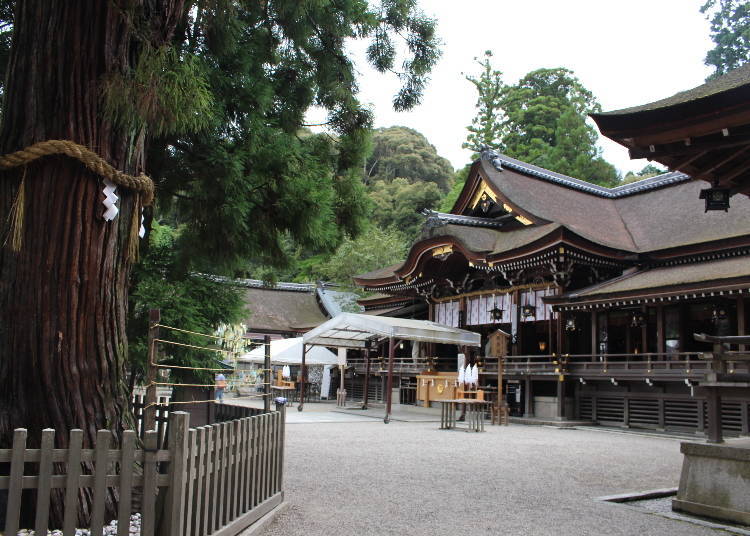
Omiwa Shrine is the oldest shrine in Japan, and it was founded to worship Mt. Miwa. The mountain is covered in cedar, pine, and cypress trees, and has been revered as a sacred mountain for centuries.
Instead of having a main hall, the tradition at Omiwa Shrine is to pass through three gates in the worship hall and pray to the mountain itself. This tradition has continued to the present day.
The deity enshrined at Omiwa Shrine is Omononushi no Okami, the god of national development and the protector of agriculture, commerce, and industry. This includes industrial development, medicine, and sake brewing. Omononushi no Okami is known as the "great god of Omiwa" and is beloved by many.
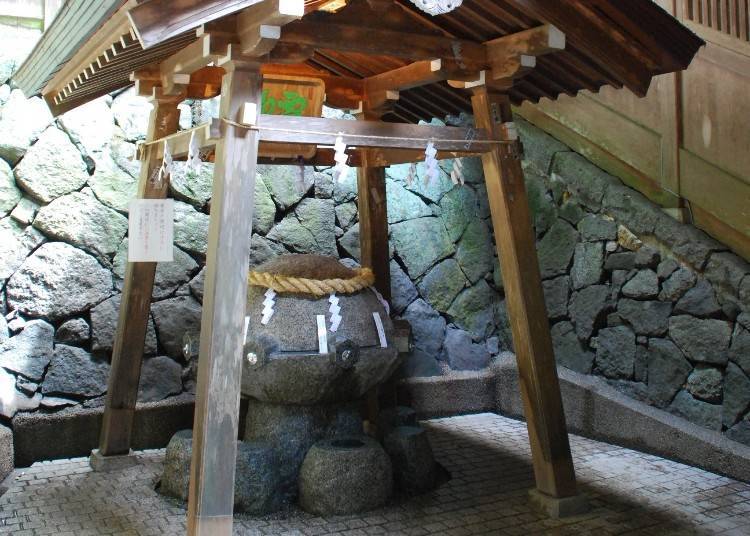
Omiwa Shrine houses Sai Shrine, which is dedicated to a deity known for its healing powers. The shrine features a well that provides sacred water from Mount Miwa, which is believed to possess medicinal properties.
In addition to Sai Shrine, there are other fascinating sites to explore within the Omiwa Shrine complex, including Kuehiko Shrine, which is dedicated to the god of wisdom, and the Daimiwa Shrine observation platform.

Omiwa Shrine is associated with rabbits. At the entrance to the sanshuden (assembly hall) located to the left of the worship hall is the "nade-usagi" rabbit statue, which is said to have guarded the firebox of the large stone lantern at the first torii gate since the Edo period.
When you visit the shrine, be sure to pet the "nade-usagi" and receive its good luck. There are also rabbit good luck charm omamori and ema available.
-

-
Address
1422, Miwa, Sakurai-shi, Nara, 633-0001
View Map -
Nearest Station
Miwa Station (JR Sakurai Line)
9 minutes on foot
- Phone Number 0744-42-6633
-
Address
1422, Miwa, Sakurai-shi, Nara, 633-0001
4. Hasedera: The sacred field of Kannon with beautiful peonies
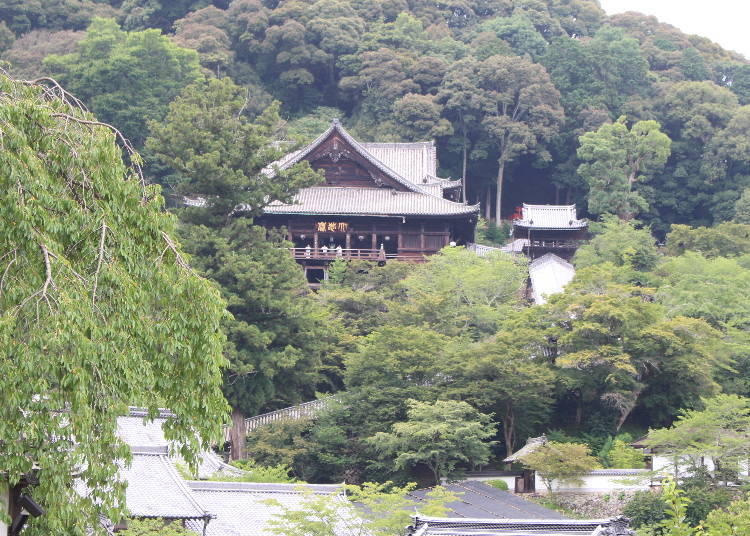
Hasedera Temple is the main temple of the Buzan school of the Shingon Buddhist sect, which has over 3000 branch temples all over Japan. The temple is also known as the 8th of the 33 temples that belong to the Saigoku Kannon Pilgrimage.
The main hall of the temple, called "Daihikaku", is a large temple constructed using the same stage construction technique as Kyoto's Kiyomizudera Temple, and is also a national treasure. The temple's main deity is the 11-faced standing Kannon statue, which is Japan's largest wooden Buddhist statue at 10 meters in height.
The statue's position, standing on a pedestal with a staff in the right hand and a water jar in the left, is known as the "Hasedera style" of statue.
Hasedera is often referred to as the "Temple of Flowers" because of the flowers and trees that can be enjoyed in every season, including the temple's famous peonies, as well as hydrangeas and maples.

This is the shrine's principal deity statue of the 11-faced Kannon goddess. During the spring and fall special worship season, visitors are allowed to walk up close to the Kannon statue.
The sight looking up from her feet is stunning. You can also directly touch the statue's feet, so say a prayer while you touch them for good luck.
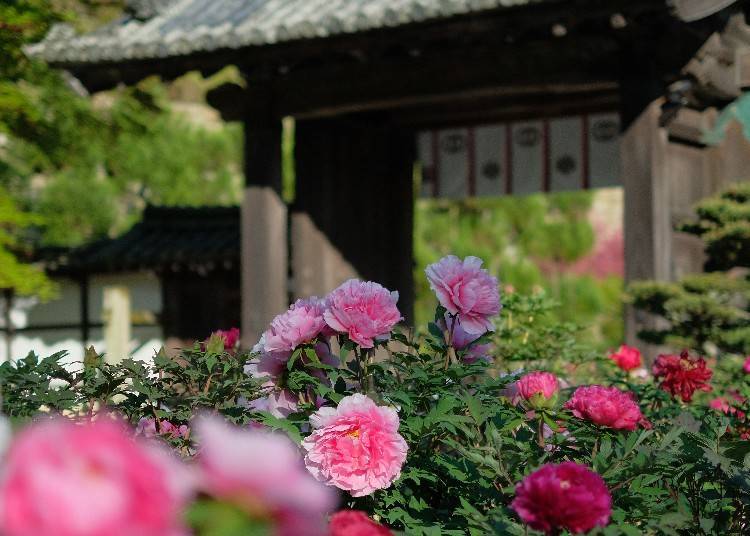
Hasedera Temple is a great place to enjoy flowers throughout the year, but it's most famous for its peonies. The temple grounds in Nara have over 7,000 peonies, and the view during April when the flowers are in full bloom is breathtakingly beautiful.
Every year from mid-April through the Golden Week holiday, the temple holds a "Peony Festival." During the festival, there are tea offerings and tea parties that visitors can attend.
-

-
Address
731-1 Hatsuse, Sakurai City, Nara Prefecture, 633-0112
View Map -
Nearest Station
Hasedera Station (Kintetsu-osaka Line)
15 minutes on foot
- Phone Number 0744-47-7001
-
Address
731-1 Hatsuse, Sakurai City, Nara Prefecture, 633-0112
5. Abe Monju-in: An ancient tomb known as one of Japan’s three major Buddhist Monju temples
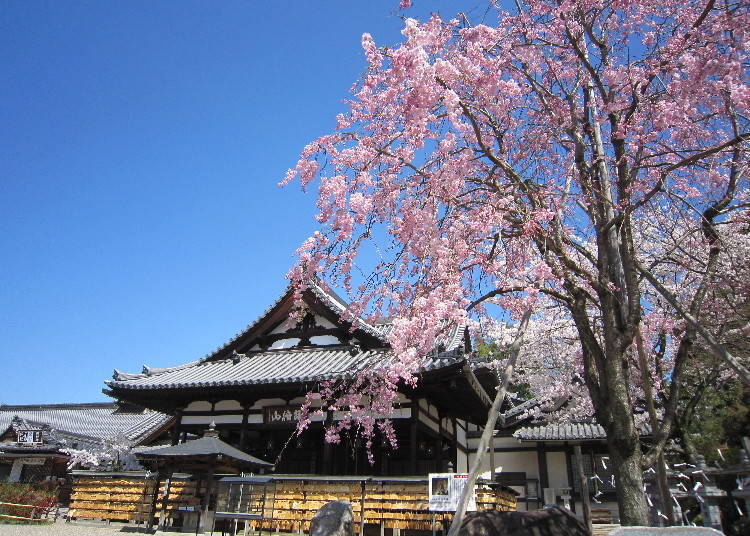
Abe Monju-in is a curious Nara temple known for enshrining one of Japan's three largest Monju (deity of meditation), the Monju Busatsu deity being most famous by the Japanese saying, "Three gathered together have the wisdom of Monju."
Abe-shi, the head of an old, powerful clan established the shrine in the year 645, making it among Japan's oldest temples.
Because the temple is dedicated to the god of wisdom, the temple gets many visitors every year during the school entrance exam season to pray for passing their exams.
The temple's central Monju Busatsu statue, created by Buddhist statue sculptor Kaikei, is one of Japan's greatest national treasures.
Within the Nara temple are many fascinating sights, including a memorial to Abe no Seimei, the onmyoji and the shrine's deity.

The temple's primary deity is a kishi-zo crafted from colored wood, which happens to be Japan's largest Monju Bosatsu statue towering at 7 meters tall. The statue of Monju is depicted riding a large lion and radiates a sense of impact and power. Along with four accompanying statues, including one of follower Zenzaidoji, the Monju is considered one of Kaikei's most remarkable pieces of art.

Kinkaku-ukimi-do Hall, also known as Nakamaro Hall, was constructed to honor the Abe clan, including Abe no Nakamaro, who was born in this very Nara temple, and Abe no Seimei.
Inside, you can find statues of deities, including Nakamaro, Seimei, the god of good fortune Benzaiten, the 9 kuyosei guardian gods of protection from evil, and wall hangings of the 12 gods of protection from disaster.
Additionally, visitors can participate in the "shichi-mairi" good luck ritual by walking around the temple 7 times, offering a paper talisman to the deities with each round, and making a wish or prayer.
-
Abe Monju-in安倍文殊院
- Address 645 Abe, Sakurai-shi, Nara
-
Nearest Station
20-minute walk or 7 minutes by bus from Sakurai Station (Kintetsu or JR) (get off at the "Abe Monju-in" stop)
- Phone Number 0744-43-0002
・Visiting Hours: 9 AM - 5 PM
・Admission: entry to temple grounds, free; entry to main hall 700 yen (matcha and dessert included), entry to Kinkaku Fumi-do Reihokan museum 700 yen; combined ticket for 1200 yen
Kiko Matsuda, Keiko Kimura, Risa Tsushi, and a team of female writers familiar with Kansai. We love eating, drinking and traveling! We share fun information based on our experiences.
- Area
- Category
*Prices and options mentioned are subject to change.
*Unless stated otherwise, all prices include tax.
Popular Tours & Activitiess
Recommended places for you
-
Goods

Yoshida Gennojo-Roho Kyoto Buddhist Altars
Gift Shops
Nijo Castle, Kyoto Imperial Palace
-

Jukuseiniku-to Namamottsuarera Nikubaru Italian Nikutaria Sannomiya
Izakaya
Kobe, Sannomiya, Kitano
-

Kambei Sannomiyahonten
Yakiniku
Kobe, Sannomiya, Kitano
-

ISHIDAYA Hanare
Yakiniku
Kobe, Sannomiya, Kitano
-

Tsutenkaku Tower
Landmarks
Shinsekai, Tennouji, Tsuruhashi
-

Kanzenkoshitsuyakinikutabehodai Gyugyu Paradise Sannomiya
Yakiniku
Kobe, Sannomiya, Kitano
-

New Way to Reach Koyasan! Ride Nankai's 'GRAN Tenku' for a Heavenly Journey
by: Guest Contributor
-
Ad

Experiencing Manga as Culture, Not Just Reading It: Expo 2025 with Rumiko Takahashi
-

Everything You Need to Know About teamLab Biovortex Kyoto (2025 Insider Guide)
by: Wemmy Chau
-

A First Look at NEMU RESORT’s 2026 Grand Renewal in Ise-Shima: A Resort Shaped by Village, Sea, and Forest
by: Guest Contributor
-
Ad

Recharge and Relax with a Healing Getaway at Kamenoi Hotel Toba
-

Kyoto's Hidden Treasures Open This Winter! Enjoy Exclusive Access to 15 Rare Cultural Sites (Jan-Mar 2026)
by: Guest Contributor
Inspiration for Accommodations
-

Spacious Family Hotel in Namba: 20 Comfortable Stays for Family Fun
-

Charming Hotels to Enjoy the Spectacular Views of Arashiyama's Autumn Leaves from Your Room
-

Experience Stunning Views of Osaka Castle from Private Spaces: Top Hotels Near Osaka Castle
-

Recommended by Visitors! Arashiyama's Best-Rated Hotels
-

Family-Friendly Universal Studios Japan Hotel with Excellent Access
-

Enjoy a Comfortable Stay in Osaka! 10 Hotels with Convenient Airport Shuttle Services
-

Top 10 Recommended Hotels Near Namba Station with Great Access
-

Enjoy Night Views from Your Room! Recommended Hotels in Namba Area
-

Secrets to Shopping in Japan: Guide to Annual Sales in Japan & Where to Shop
by: Miyu Shimada
-

Kichijoji – Explore Tokyo’s Top-Rated Stylish Suburb in Half a Day!
-

Kasuga Taisha: A Kyoto Day Trip to See the Unforgettable Sight of 3,000 Lanterns
-

5 Unique Shrines and Temples in Osaka and Kobe for Your First Visit
by: WESTPLAN
-

Inside Kyoto's Spectacular Sanjusangen-do Temple with 1,000 Gold Statues
-

Top 5 Shinto Shrines and Power spots in Kansai for Love and Marriage
- #best gourmet Osaka
- #things to do Osaka
- #what to do in kyoto
- #what to bring to japan
- #best gourmet Kyoto
- #new years in Osaka
- #what to buy in nanba
- #Visiting Osaka
- #onsen tattoo friendly arima
- #daiso
- #Visiting Kyoto
- #best japanese soft drinks
- #japanese fashion culture
- #japanese convenience store snacks
- #japanese nail trends














